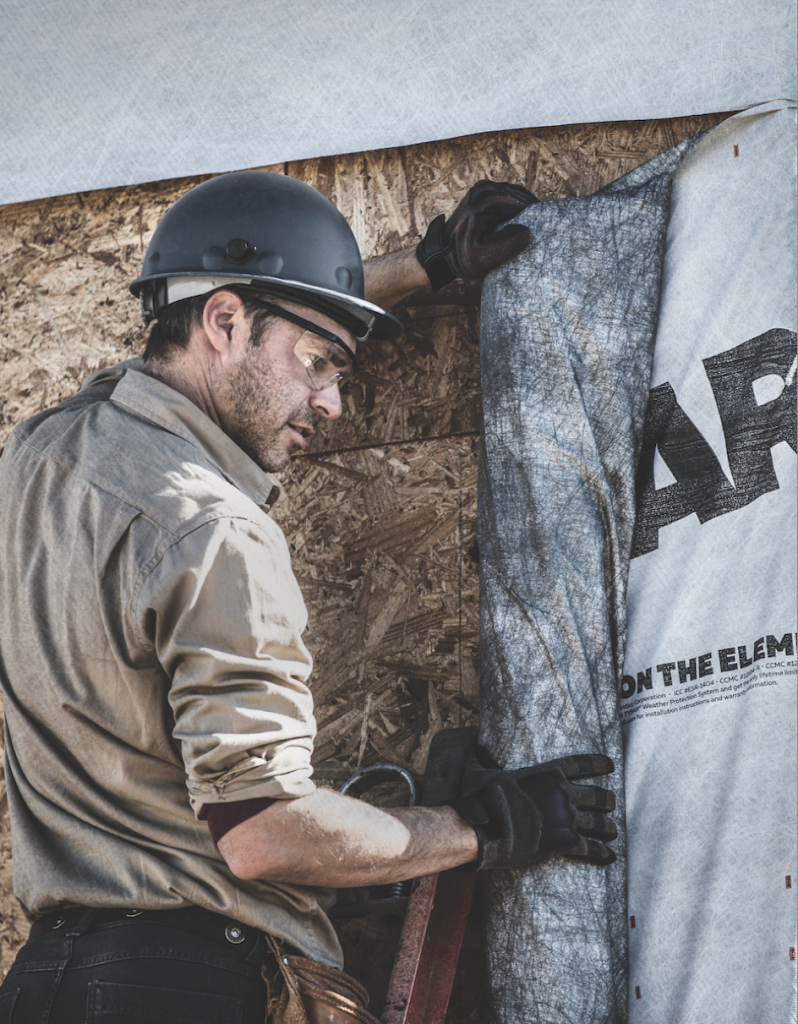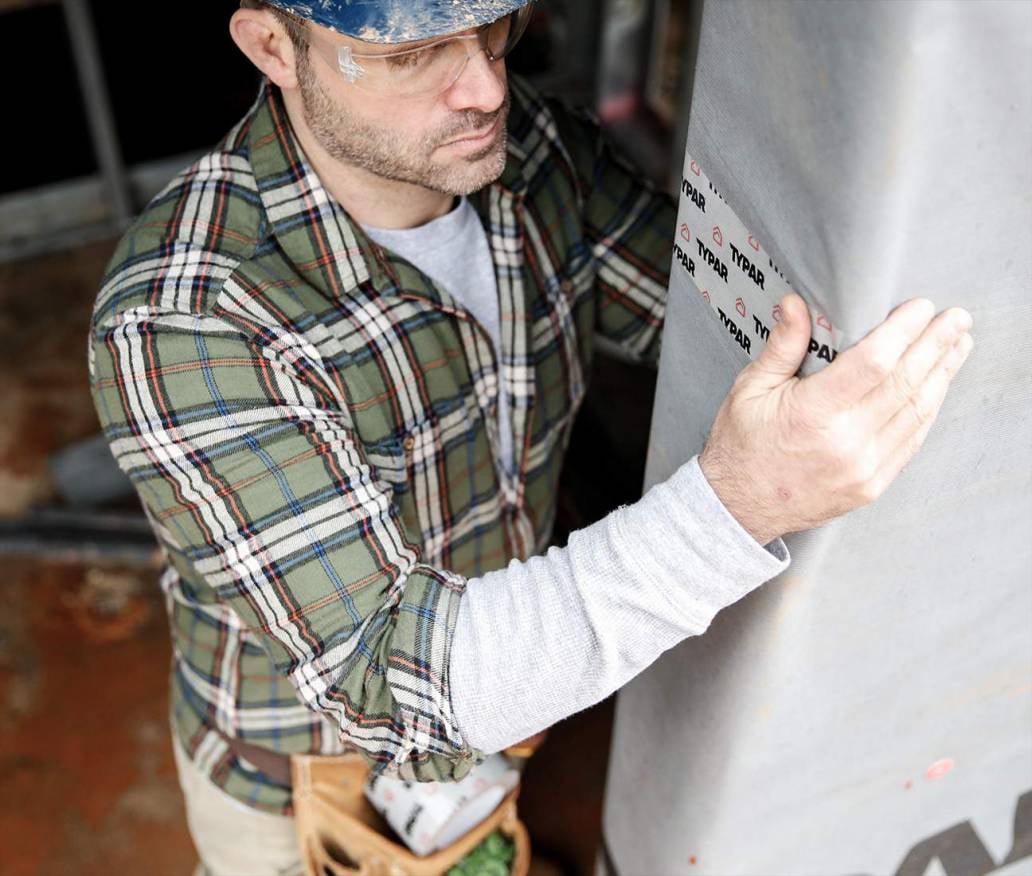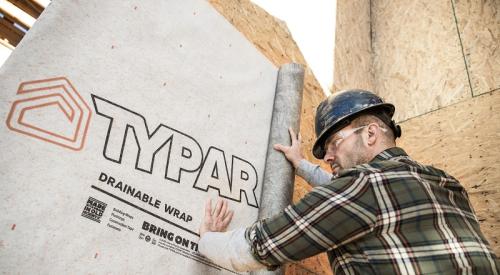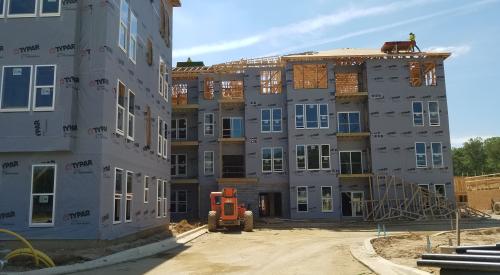A building wrap must be able to stand up to the forces of nature without tearing or losing any of its key performance characteristics. These concerns are even more important in commercial applications, where elemental exposure may be greater due to larger buildings and longer project timelines.
If you want to be confident your building wrap will maintain optimal performance over the life of the structure, it is important to evaluate the following criteria:
Tear resistance
First and foremost, if the building wrap is torn or damaged before it is covered, it will leak and no longer perform as an air or moisture barrier until it is either re-installed or repaired. These do-overs take time, subject building materials to the elements, and cost builders money.
Tear resistance, as measured by trapezoidal tear tests (ASTM D-1117/ASTM D-5733), is a good measure for predicting a building wrap’s ability to withstand the rigors of the job site and also to stay on the wall after installation. “In-plane” is the best measurement of tear resistance. The trapezoid tear test, the best measurement of in-plane tear resistance, takes place when the building wrap is fastened to the wall and is subjected to tearing in the plane of the wall.
Tensile strength
Obviously, a building wrap that does not stay put is not going to be effective. In taller commercial buildings, higher potential wind loads make this measurement even more important.
Some building wraps make claims about their tensile strength based on ASTM D882, which is actually a test for thin plastic sheeting, not nonwoven fabrics. Since the product is never used in this way, these measurements are not meaningful.
However, the grab tensile measurement is meaningful. ASTM D5034 tests a 4’ x 6’ material sample and clearly states it is designed for nonwoven fabrics, making it a much better metric for evaluating building wraps.
UV resistance
UV stability is vital to the performance of a building wrap. Even limited exposure to ultraviolet rays causes some building wraps to deteriorate. Longer construction timelines typical of many commercial building projects put added emphasis on a material’s ability to withstand extended exposure to UV light, as weeks or even months may pass before exterior cladding in installed over the building wrap.
Technologically savvy manufacturers have begun to incorporate UV inhibitors into the coating and fibers of their products. While most builders cover building wraps shortly after installation, the prudent builder looks for a wrap with at least a 6-month UV rating.
Surfactant resistance
Surfactants found in wood tannins, cedar oils and turpentine within some cladding, as well as soap solutions can reduce the surface tension of building wrap, consequently decreasing its water holdout. Therefore, builders should look for the building wrap with the highest surfactant resistance to properly protect the building, especially when installing under vinyl and wood siding, brick, stone and stucco.

System compatibility
No matter how advanced a building wrap material is, it alone cannot be counted on to protect a structure from unwanted air and moisture movement without taking the whole assembly into consideration. It is important to specify compatible materials to ensure all components work together.
Sealants with high solvent or plasticizer content for example, can damage bitumen flashing products causing functional and aesthetic issues. To counter this problem some manufacturers have developed a system approach that includes compatible tapes for seaming and adhesive flashings for openings, vastly improving the air and moisture resistance of the building wrap.
Warranty
A good warranty speaks volumes about the quality of a product. Some high-performance building wraps on the market back builders with excellent warranties on labor and materials. Be sure to choose a product that offers one. For example, the TYPAR® Weather Protection System, which consist of TYPAR Building Wraps, Flashings, Construction Tape and Fasteners, comes standard with a lifetime limited warranty, providing an unmatched level of security for both the builder and homeowners.
Taken together, these criteria offer a picture of how effective a building wrap will be. It is important for builders to understand that a building wrap must be evaluated not only in how well it holds out air and moisture, but in its ability to maintain its performance after being exposed to elements. Only then will you know if your building wrap is tough enough to handle the job.
For more information, visit typar.com.












